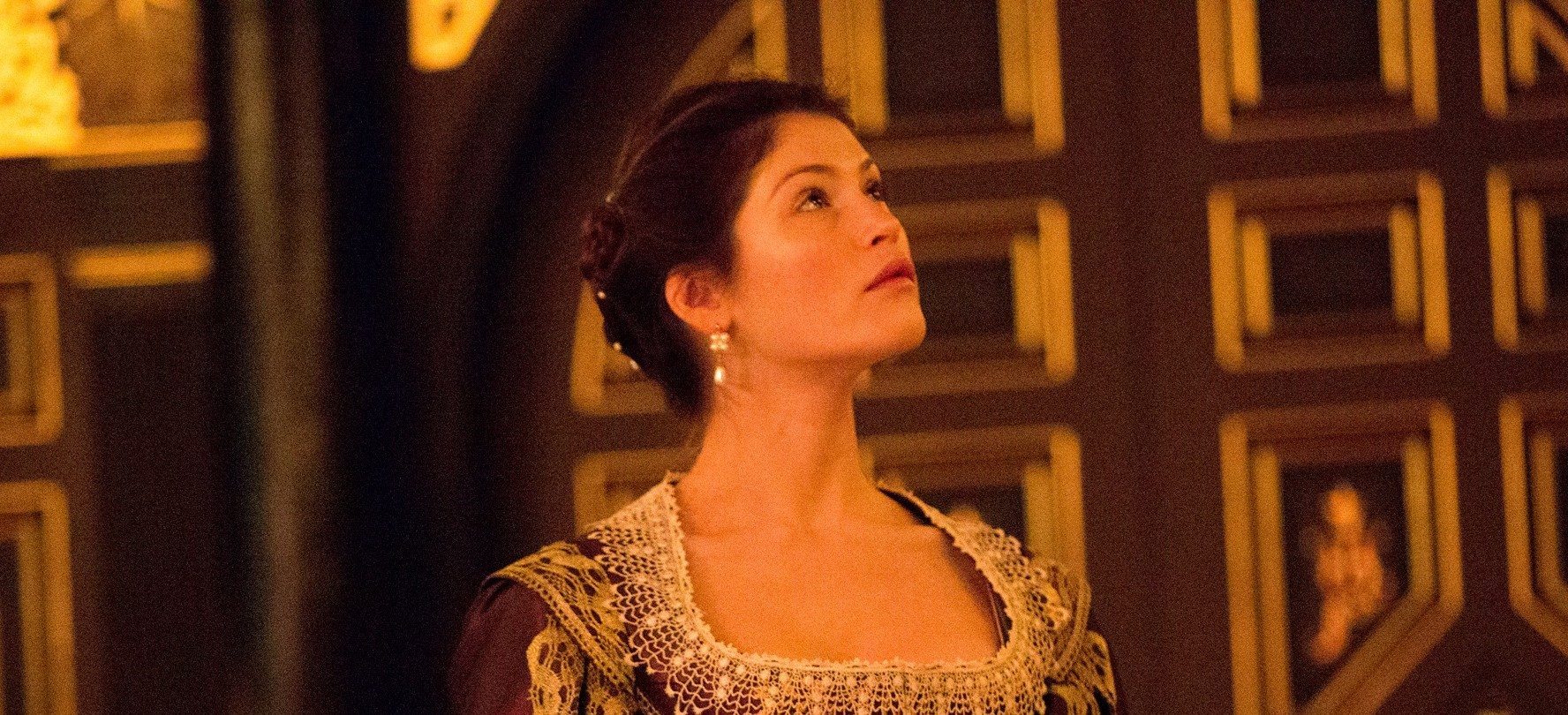So far, so good: the new Sam Wanamaker Playhouse
The intimate, ornate and awe-inspiring Sam Wanamaker Playhouse makes its debut with a brooding and visceral portrayal of John Webster’s The Duchess of Malfi. Named after the founder of the modern Globe, the 340-seater, completed at a cost of £7.5 million, provides the perfect companion to its outdoor sibling. From the moment you arrive and look at the lavish painted ceiling and the beautiful oak structure, and listen to the lutist performing on stage, you know you are in a venue that is more than a little bit special. Wanamaker’s vision has produced a unique and intense space for director, performer and spectator.
Webster’s play is the story of a Duchess who defies the will of her tyrannical brothers with expectedly grisly and at times mind-boggling consequences and while it may have its critics, of which I am (or at least was) one, having studied the play at A-Level, it provides a perfect fit as an opening production. Striving for an accurate reflection of a Jacobean theatre may come to limit the Sam Wanamaker Playhouse in the future, but for a play as dark and chilling as The Duchess of Malfi, it is ideal. The combination of faux natural light, controlled by sliding wooden panels around the fringes of the playhouse and one hundred beeswax candles placed around the stage and often held by characters gives the space an authentic warmth while also allowing, as director Dominic Dromgoole takes full advantage of, the ability to enact certain scenes in almost total darkness.
For modern theatre goers, even those accustomed to the layout of the Globe, the Sam Wanamaker Playhouse will provide a relative shock to the system. Sightlines are limited by wooden pillars, meaning, if you are sat in the galleries, you are likely to be able to see, at most, three quarters of the stage. The alternative is the punishingly intimate pit at the front of the stage where there is no escape from the unbridled violence that unfurls itself before your eyes. However, this is a challenge, that for the most part the production handles well. The movement of the actors brings them in and out of focus and there are a few set pieces which incorporate the very structure of the playhouse itself.
Aside from the character of the space, Dromgoole’s production boasts an exceptional ensemble cast. When a play treads the line between tragedy and melodrama so frequently, as Webster’s does, there becomes a reliance on strong performances to ground the piece. Luckily, the cast at the Dromgoole’s disposal fulfils this necessity with ease. Gemma Arterton as the eponymous heroine is understated yet entirely believable, charting a course from light hearted flirtation with eventual husband Antonio to despair and finally dignity with a refined yet engaging grace. In her second performance at the Globe (the first being back in 2007 in a production of Love’s Labour’s Lost) and only her fourth professional role on stage, she seems entirely at home. Yet, it is her overbearing brothers who steal the show. James Garnon’s Cardinal is cutting and sardonic in his mischief-making while David Dawson, surely destined for greater things on the evidence of this startling performance, imbues the character of the Duke, Ferdinand with a nervous and increasingly incestuous intensity which effortlessly slips between being hilarious and genuinely terrifying. A notable mention too must go to Sean Gilder, playing the malcontent and hired hand Bosola, with whom he elicits both sympathy, impressive for a character who is in effect a mass murderer, and laughter as well, some uncomfortable, many genuine.
There are different challenges ahead for the Sam Wanamaker Playhouse, with The Knight of the Burning Pestle, a production of The Malcontent performed by the Globe Young Players, a group made up solely of 12-16 year olds and a collaboration with The Royal Opera of L’Ormindo all in the pipelines. While it remains to be seen how the space will cope with these productions, it’s a case of so far, so good.

Comments